DASH Social Media Resources
Use these sample graphics and posts to share information about the DASH Eating Plan on social media.


1) Assess where you are now.
2) Discuss medication with your doctor.
3) Make DASH a part of a healthy lifestyle.
4) Adapt DASH for everyone in the family.
5) Judge success across several days, not just one.
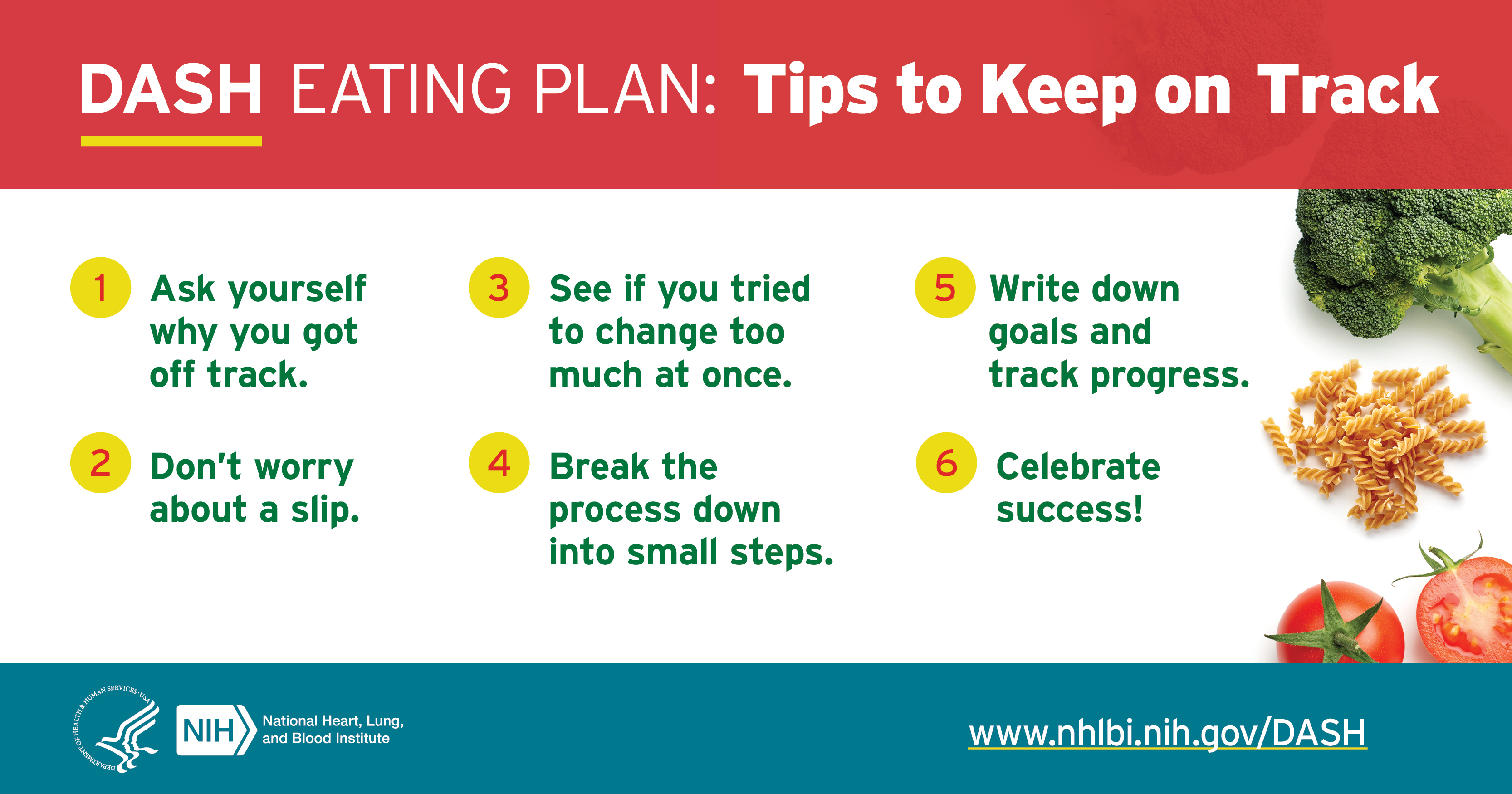

1) Ask yourself why you off track.
2) Don't worry about a slip.
3) See if you tried to change too much at once.
4) Break the process down into small steps.
5) Write down goals and track progress.
6) Celebrate success!
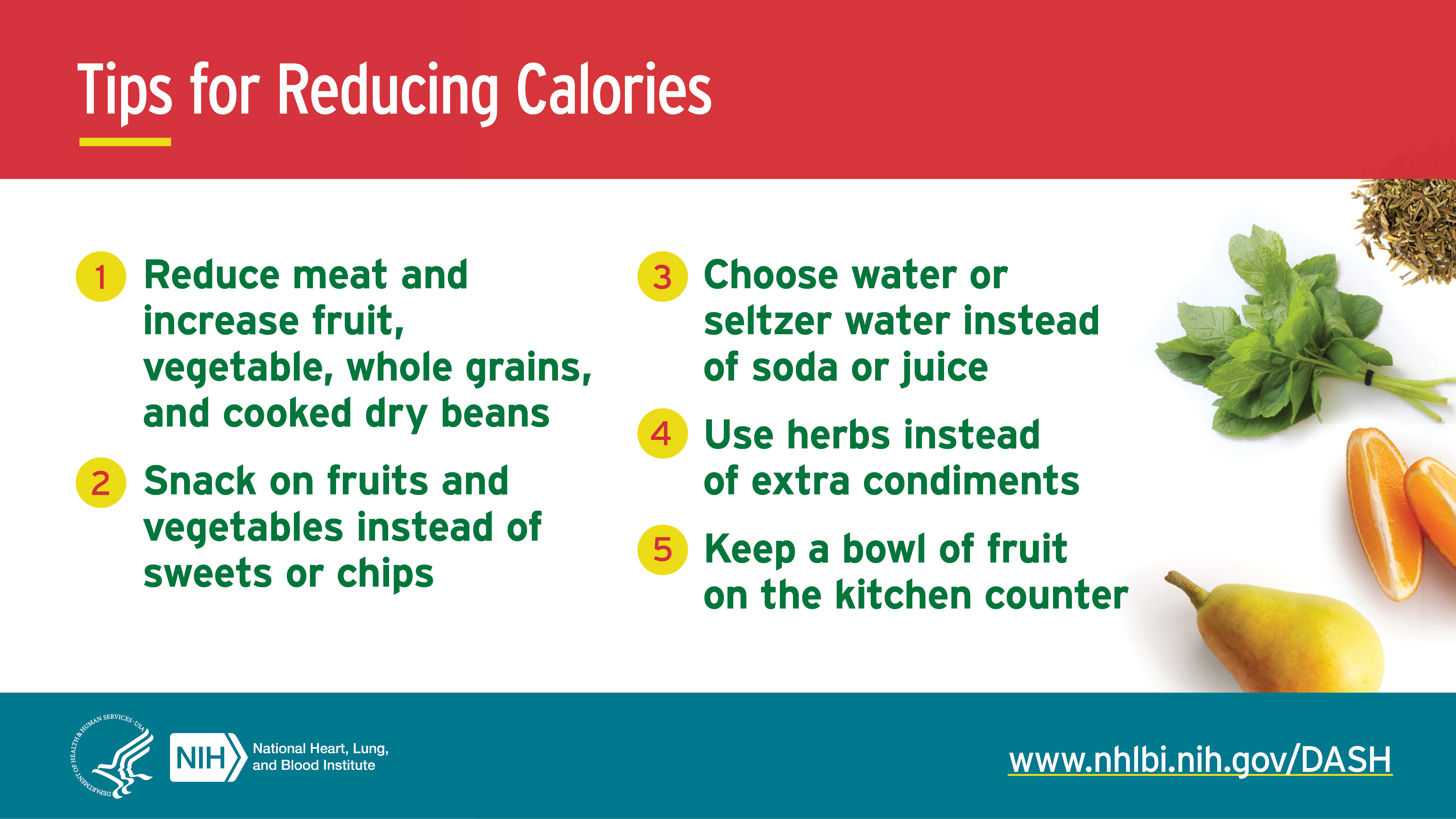

1) Reduce meat and increase fruit, vegetables, whole grains, and cooked dry beans.
2) Snack on fruits and vegetables instead of sweets or chips.
3) Choose water or seltzer water instead of soda or juice.
4) Use herbs instead of extra condiments.
5) Keep a bowl of fruit on the kitchen counter.
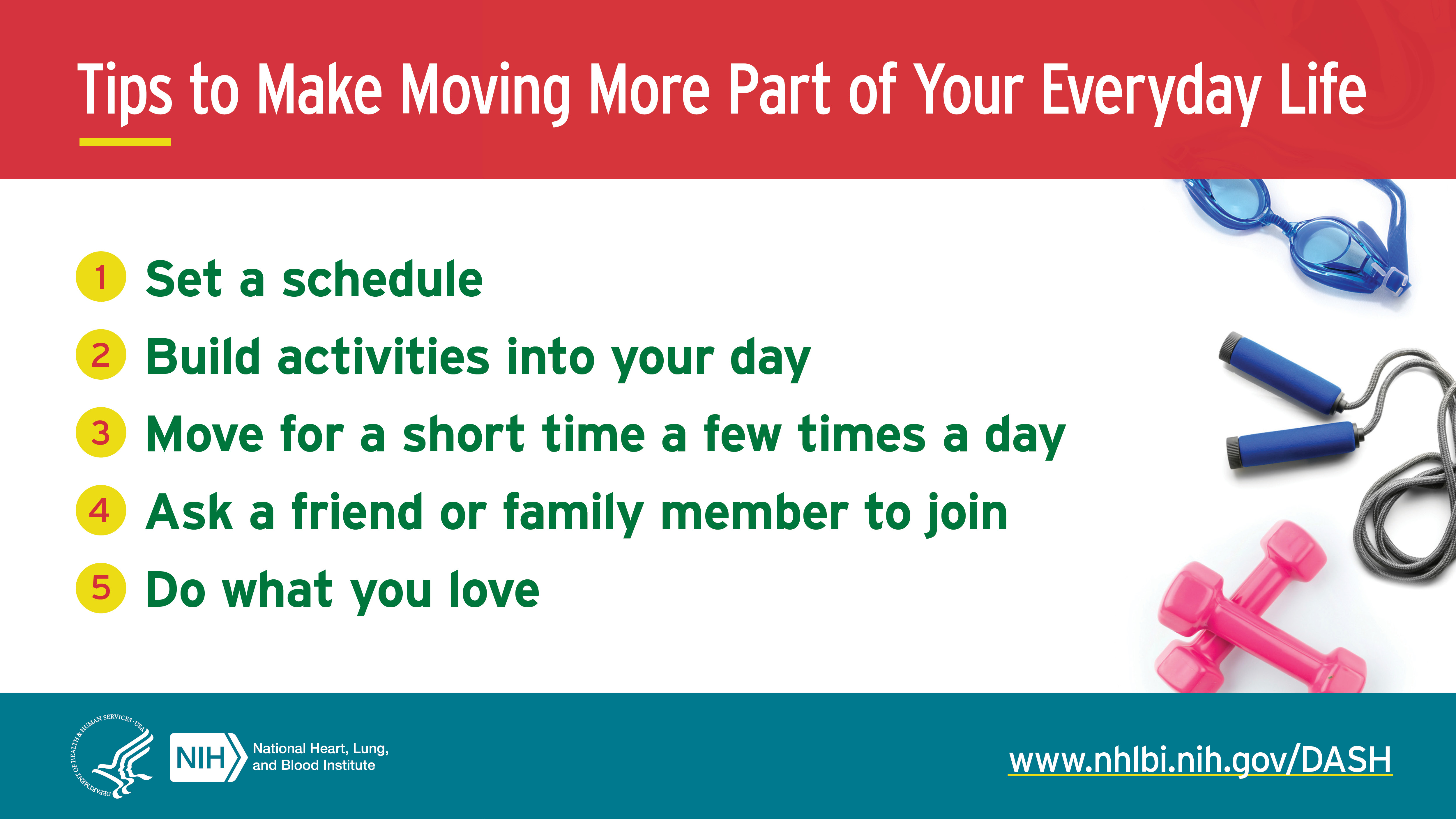

1) set a schedule
2) Build activities into your day
3) Move for a short time a few times a day
4) Ask a friend of family member to join
5) Do what you love


Potassium is a vital mineral that keeps your body functioning properly and keeps blood pressure levels healthy
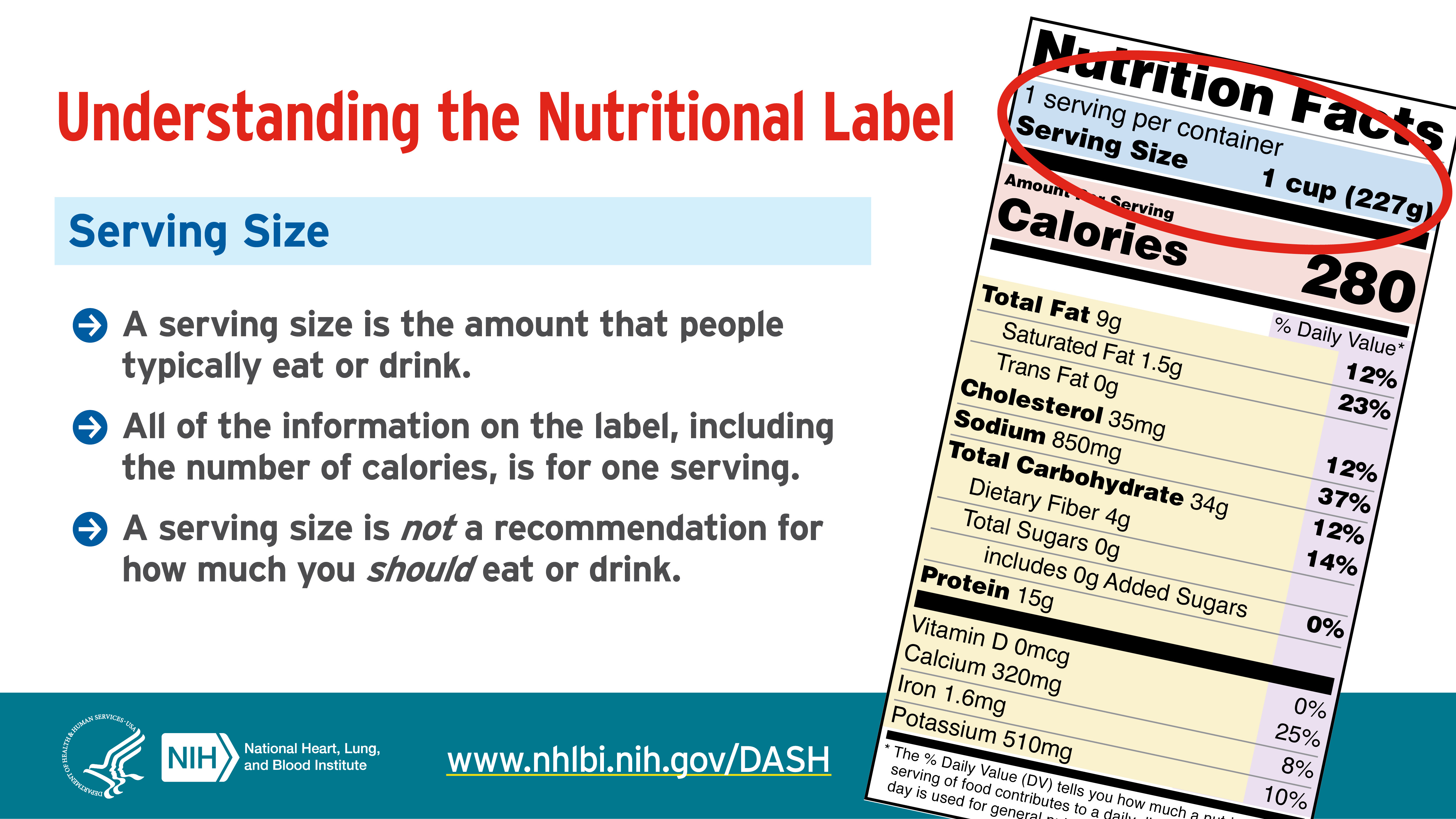

A serving size is the amount that people typically eat or drink. All of the information on the label, including the number of calories, is for one serving. A serving size is not recommendation for how much you should eat or drink.


Calories are the measurement for how much energy your body gets from each serving. Nutrition labels are based on a daily diet of 2,000 calories, but you may need more or less depending on factors such as age and physical activity level. The number of servings you consume determines the number of calories you eat. For example, eating two servings of this product would be 560 calories.
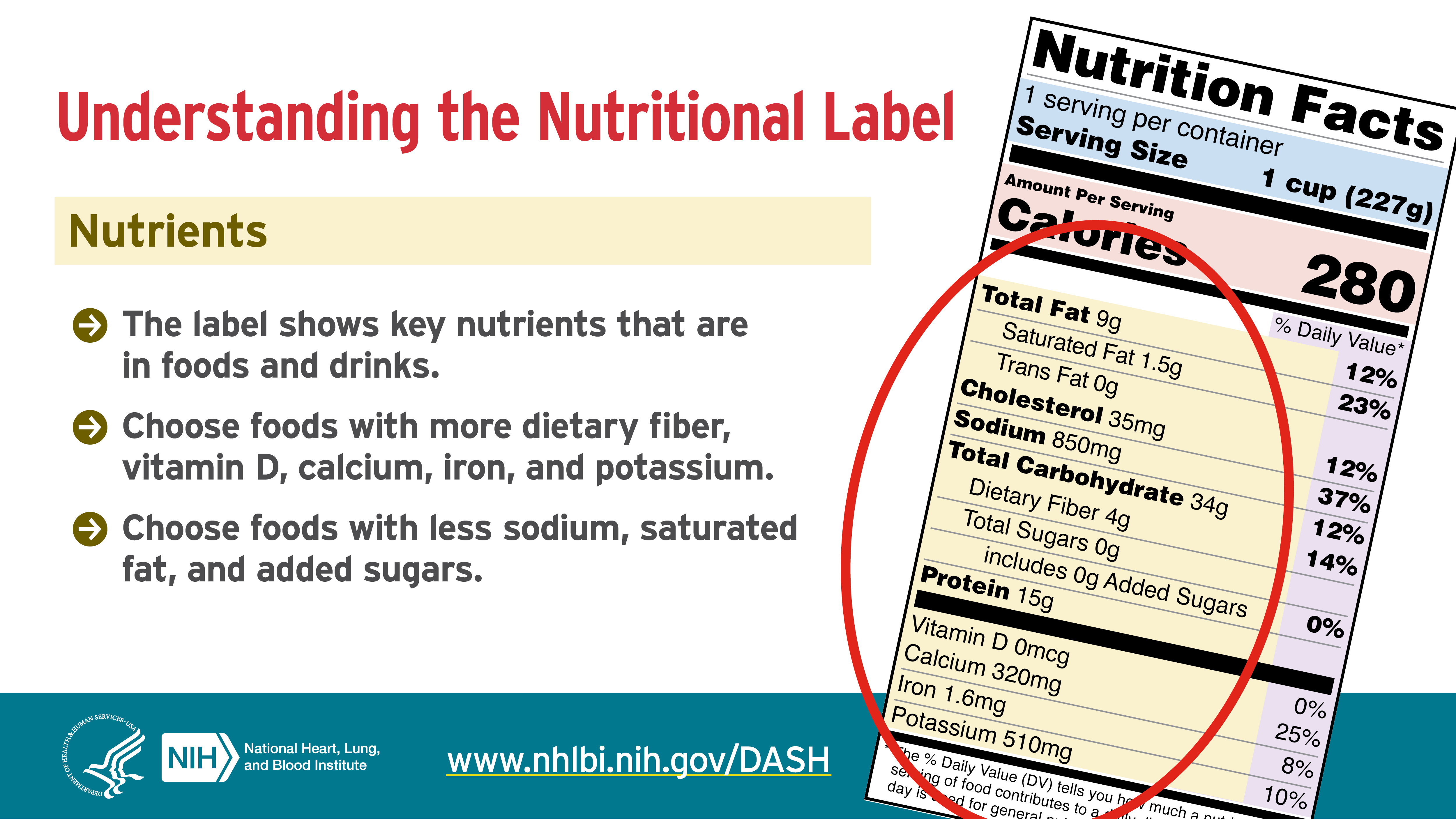

The label shows key nutrients that are in foods and drinks. Choose foods with more dietary fiber, vitamin D, calcium, iron, and potassium. Choose foods with less sugars, saturated fat, and added sugars.
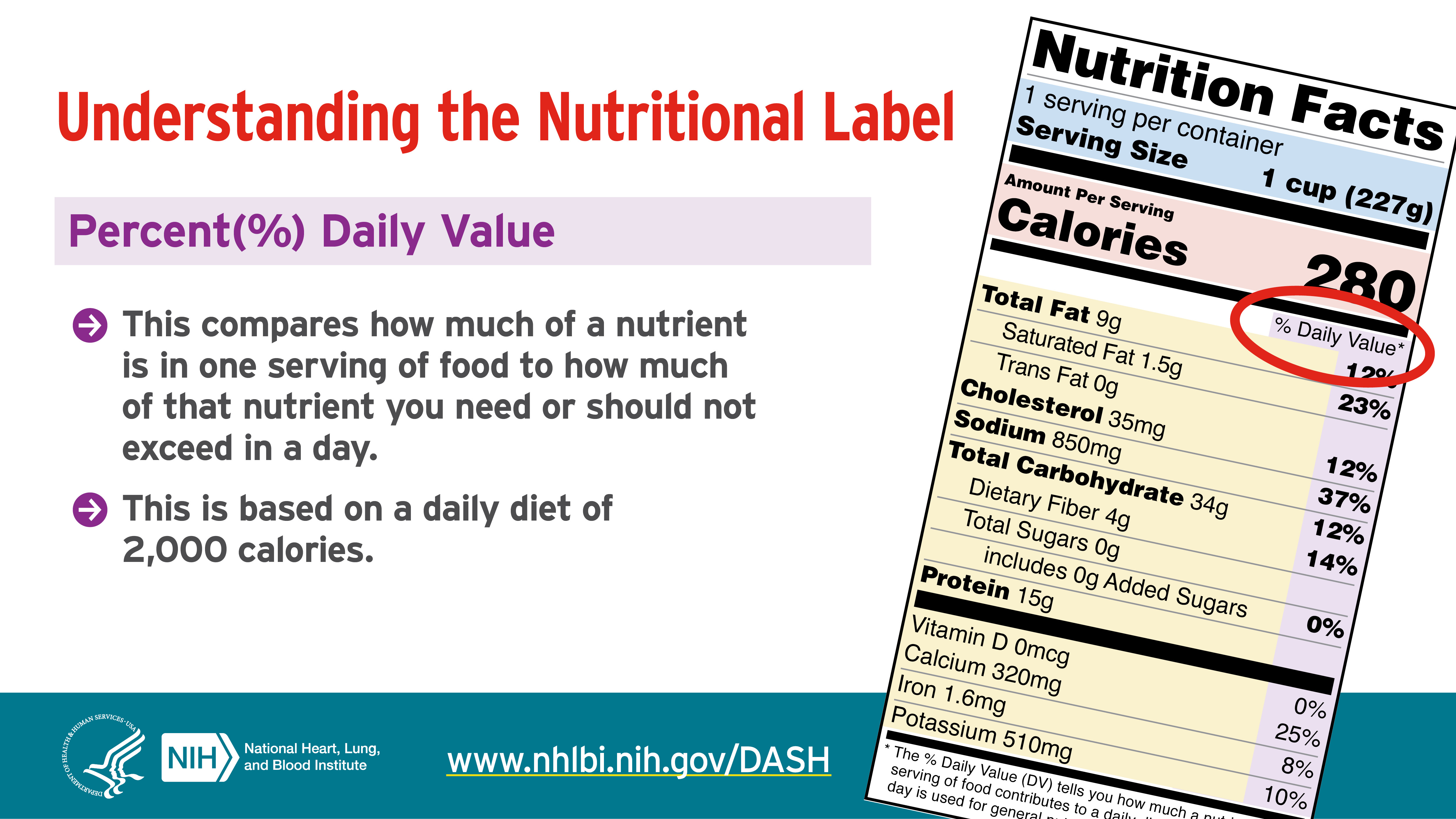

This compares how much of a nutrient is in one serving of food to how much of that nutrient you need or should not exceed in a day. This is based on a daily diet of 2,000 calories.


The DASH Eating Plan, which is proven to help lower high blood pressure, can be adapted to fit many different lifestyles. Find tips to get started: www.nhlbi.nih.gov/DASH